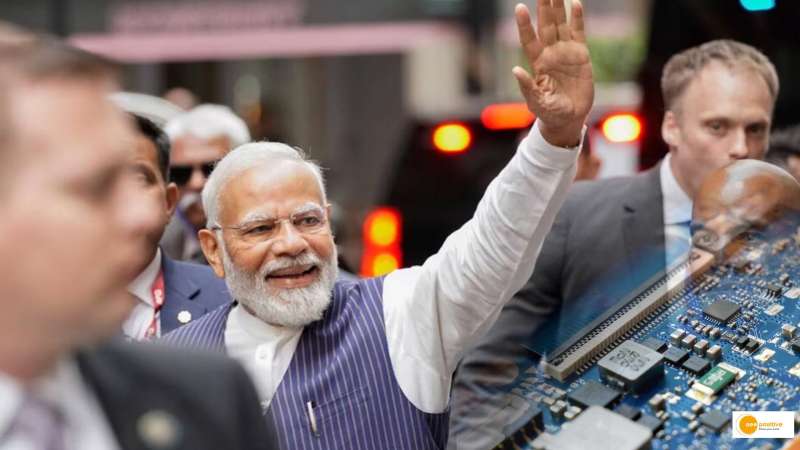

Indian Prime Minister Narendra Modi has extended an invitation to American chip maker Micron Technology and Applied Materials to strengthen semiconductor manufacturing in India. With India offering competitive advantages across various stages of the supply chain, the aim is to foster collaboration, develop process technology, and cultivate a skilled workforce. Know the discussions held, the benefits of semiconductor development in India, and the potential for increased investment in the aviation and renewable energy sectors.
Inviting Micron Technology and Applied Materials
Prime Minister Modi held meetings with top executives from Micron Technology and Applied Materials during his visit to the United States. He invited Micron Technology to contribute to the growth of semiconductor manufacturing in India, recognizing the country’s competitive advantages in this field. Additionally, he discussed with the CEO of Applied Materials, Gary E Dickerson, the potential for collaboration with Indian academic institutions to create a skilled workforce and advance process technology and advanced packaging capabilities.
What is Semiconductor Development
Semiconductor development refers to the process of designing, manufacturing, and advancing semiconductor materials, components, and devices. Semiconductors are a crucial part of modern electronics and technology, serving as the foundation for various devices such as microchips, transistors, diodes, and integrated circuits.
Semiconductor development plays a critical role in driving advancements in various sectors, including electronics, telecommunications, automotive, aerospace, healthcare, and renewable energy. It enables the creation of smaller, faster, and more efficient devices, contributing to the growth of digital technologies, artificial intelligence, the Internet of Things (IoT), and other emerging technologies.
Benefits of Semiconductor Development in India
India has been actively promoting semiconductor development and has introduced a production-linked incentive (PLI) scheme to attract global companies. By positioning itself as an attractive investment destination in Asia for electronics and semiconductors, India aims to tap into the potential of this market. With the Indian semiconductor market expected to reach USD 64 billion by 2026, fostering domestic semiconductor manufacturing can drive economic growth, create job opportunities, and reduce dependence on imports.
Investment in Aviation and Renewable Energy Sectors
During the discussions, Prime Minister Modi acknowledged General Electric’s (GE) commitment to manufacturing in India and invited the company to play a greater role in the aviation and renewable energy sectors. Emphasizing the importance of technology collaboration, Modi and GE CEO H Lawrence Culp Jr explored ways to promote manufacturing in India and leverage GE’s expertise in these key sectors.


